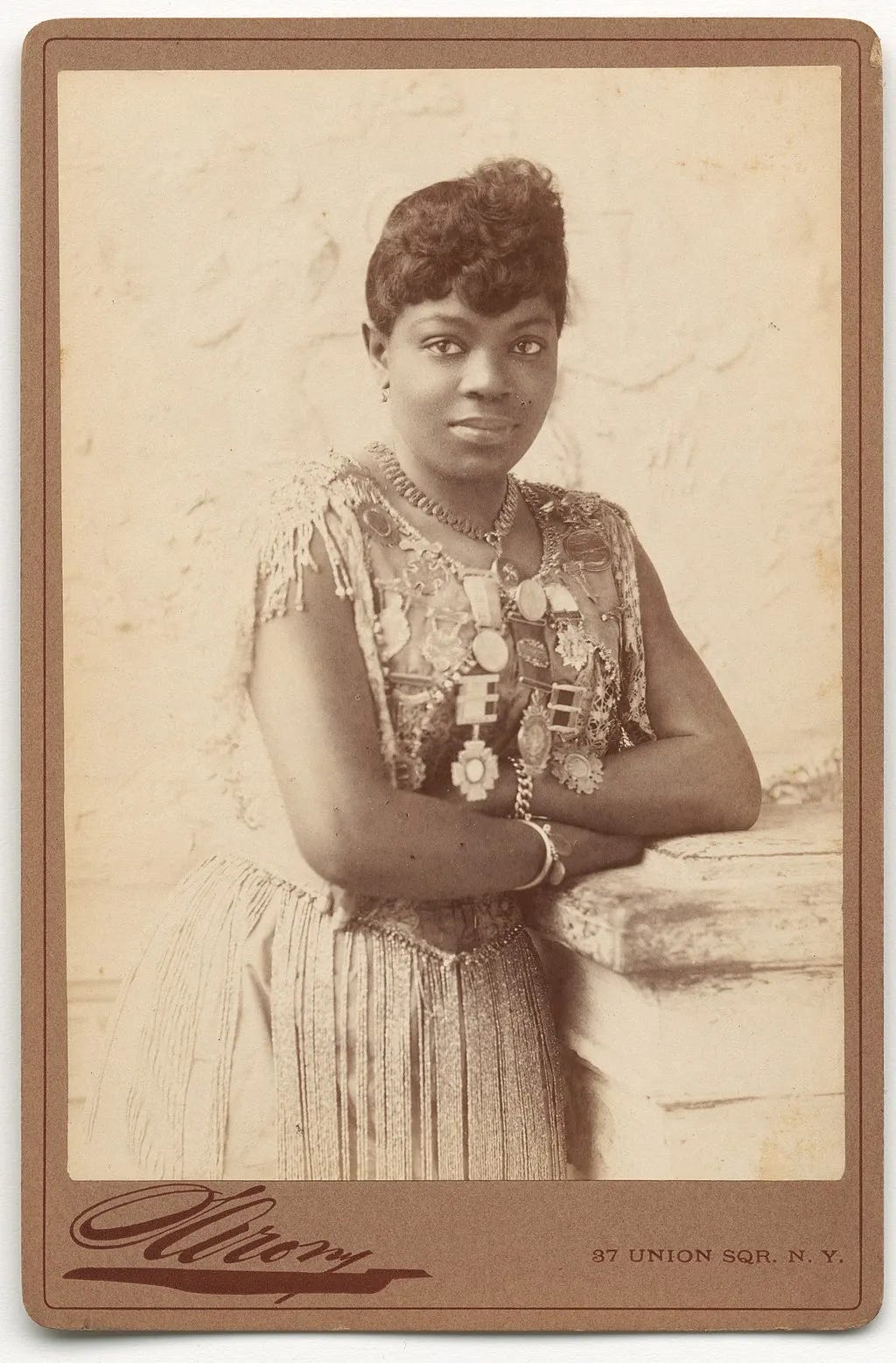She was an enormous talent who could sing with the best. One could argue that she was the best.
Sissieretta Jones, or Madame Jones as she liked to be called, captivated audiences with her beautiful and pleasing voice. And in a time when black performers tended to entertain black audiences, she sang to everyone, including U.S. President Benjamin Harrison and his family and friends. That performance took place when Sissieretta was in her mid-20s. She would perform for President Harrison again and sing for the next three U.S. presidents as well. Sissieretta even graced stages of concert halls worldwide, including a memorable performance for the British Royal family.
Born as Mathilda Sissieretta Joyner in Portsmouth, Virginia, in 1868, Sissieretta's parents were part of a growing middle-class black community. Not much is known about her upbringing, but after the deaths of her younger siblings, her family moved to Providence, Rhode Island.
It was here in Providence that Sissieretta began to sing, likely inspired by her mother, a singer and pianist. At fifteen, Sissieretta enrolled at the Academy of Music, though her music life was put on hold when she married and had a child, Mabel, around the same time. Sadly, less than two years later, Mabel passed away in 1886. At this point, Sissieretta dedicated herself to music, likely as part of coping with the loss of her child.
After Mabel's death, Sissieretta moved to Boston and enrolled in vocal training at a Conservatorium, though it isn't clear which one it was. Her career performing began soon after.
Before turning twenty, Sissieretta performed at Boston's Music Hall to a crowd of five thousand, where her singing quickly garnered praise. One review noted, "She kept the audience spell-bound…and was received with rapture…She is unmistakably entitled to the lavish praise she so justly deserves." Another reviewer wrote, "It is difficult to do her justice without incurring a suspicion of being betrayed into exaggeration…Madame JONES' voice is of great compass, and combined strength and sweetness, and she articulated every word distinctly; she is one of those rare singers whom one can listen to without the idea of ever getting satiated."
Sissieretta's career soared as she became the highest-paid black singer of her time while earning universal acclaim. She showed that despite the numerous challenges created by racial barriers of her time, talent and hard work could transcend obstacles.
In 1915, she retired to care for her sick mother but continued to sing and perform in church until passing away in 1933.
Sources:
Graziano, John. “The Early Life and Career of the ‘Black Patti’: The Odyssey of an African American Singer in the Late Nineteenth Century.” Journal of the American Musicological Society, vol. 53, no. 3, 2000, pp. 543–96. JSTOR, https://doi.org/10.2307/831938. Accessed 10 Jun. 2024.
Sissieretta Jones photograph taken by Napoleon Sarony, circa 1895 - National Portrait Gallery, Smithsonian Institution, NPG.2009.37
“Sissieretta Jones (1868-1933).” The Black Perspective in Music, vol. 4, no. 2, 1976, pp. 191–201. JSTOR, https://doi.org/10.2307/1214508. Accessed 10 Jun. 2024.
“Sissieretta Jones: The Black Patti—From the Carnegie Hall Archives.” Carnegie Hall,
“The Black opera singer who lit the 19th century on fire.” Rhode Island PBS,













Share this post